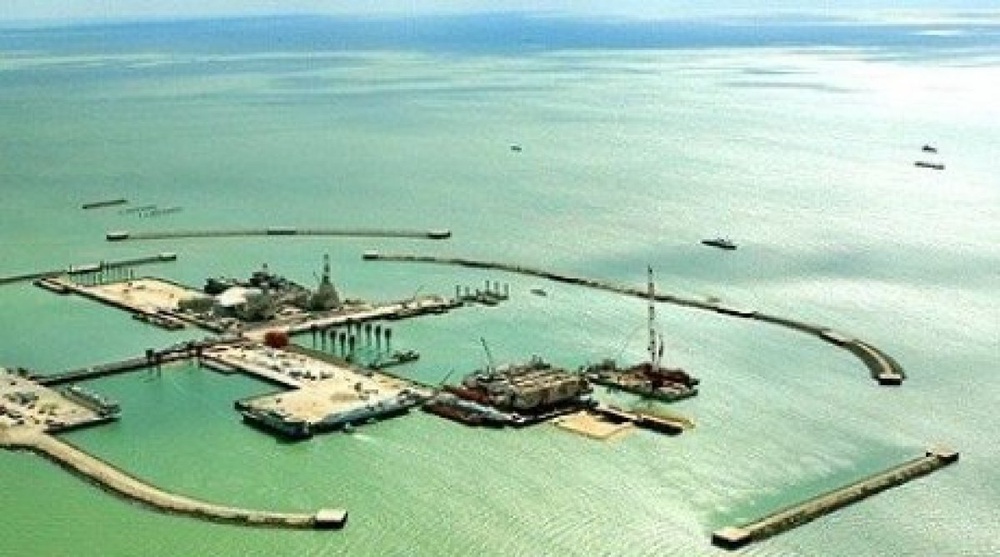
Crude production has been resumed at the giant Kashagan oilfield that was suspended late September, the Kazakhstan’s Oil and Gas Ministry reports. Crude production was suspended September 25 due to some faults of the gas pipeline. According to first estimates, the repairs were supposed to take 3-4 days. According to earlier statements made by the country’s Oil and Gas Minister Uzakbai Karabalin, the suspension was not expected to disrupt the plan of bringing the commercial production figure to 75 000 barrels a day in October. “October 6, upon completion of all the repairs, the wells at the oilfield have been restarted (…) production was resumed with no complications”, the statement reads. According to the Ministry, a minor leakage of gas was detected September 24 during a regular examination on the gas pipeline running from the D artificial island to the Bolashak treatment facility. The works to open up the gas pipeline started September 26. The exact leakage point was found September 28. Crude production at Kashagan started September 11, 2013. Earlier Tengrinews.kz reported that the level of commercial production of 75 000 barrels a day is to be reached by early October 2013, adding that Kazakhstan plans to produce 1.5-3 million tons of crude at Kashagan in 2013. The Kashagan field, named after a 19th century Kazakh poet from Mangistau, is located in the Kazakhstan sector of the Caspian Sea and extends over a surface area of approximately 75 kilometers by 45 kilometers. The reservoir lies some 4,200 meters below the shallow waters of the northern part of the Caspian Sea and is highly pressured (770 bar of initial pressure). The crude oil that it contains has high ‘sour gas’ content. The development of Kashagan, in the harsh offshore environment of the northern part of the Caspian Sea, represents a unique combination of technical and supply chain complexity. The combined safety, engineering, logistical and environmental challenges make it one of the largest and most complex industrial projects currently being developed anywhere in the world. According to Kazakhstan geologists, geological reserves of Kashagan are estimated at 4.8 billion tons of oil. According to the project’s operator, the oilfield’s reserves are estimated at 38 billion barrels, with 10 billion barrels being recoverable. Besides, natural gas reserves are estimated at over 1 trillion cubic meters. The consortium developing the field comprises Eni, Shell, ExxonMobil, Total and KazMunaiGaz (all with a 16.81% stake) as well as China National Petroleum Company (8.33%) and Japan's Inpex (7.56%).





Crude production has been resumed at the giant Kashagan oilfield that was suspended late September, the Kazakhstan’s Oil and Gas Ministry reports.
Crude production was suspended September 25 due to some faults of the gas pipeline. According to first estimates, the repairs were supposed to take 3-4 days. According to earlier statements made by the country’s Oil and Gas Minister Uzakbai Karabalin, the suspension was not expected to disrupt the plan of bringing the commercial production figure to 75 000 barrels a day in October.
“October 6, upon completion of all the repairs, the wells at the oilfield have been restarted (…) production was resumed with no complications”, the statement reads.
According to the Ministry, a minor leakage of gas was detected September 24 during a regular examination on the gas pipeline running from the D artificial island to the Bolashak treatment facility.
The works to open up the gas pipeline started September 26. The exact leakage point was found September 28. Crude production at Kashagan started September 11, 2013.
Earlier Tengrinews.kz reported that the level of commercial production of 75 000 barrels a day is to be reached by early October 2013, adding that Kazakhstan plans to produce 1.5-3 million tons of crude at Kashagan in 2013.
The Kashagan field, named after a 19th century Kazakh poet from Mangistau, is located in the Kazakhstan sector of the Caspian Sea and extends over a surface area of approximately 75 kilometers by 45 kilometers. The reservoir lies some 4,200 meters below the shallow waters of the northern part of the Caspian Sea and is highly pressured (770 bar of initial pressure). The crude oil that it contains has high ‘sour gas’ content.
The development of Kashagan, in the harsh offshore environment of the northern part of the Caspian Sea, represents a unique combination of technical and supply chain complexity. The combined safety, engineering, logistical and environmental challenges make it one of the largest and most complex industrial projects currently being developed anywhere in the world.
According to Kazakhstan geologists, geological reserves of Kashagan are estimated at 4.8 billion tons of oil. According to the project’s operator, the oilfield’s reserves are estimated at 38 billion barrels, with 10 billion barrels being recoverable. Besides, natural gas reserves are estimated at over 1 trillion cubic meters. The consortium developing the field comprises Eni, Shell, ExxonMobil, Total and KazMunaiGaz (all with a 16.81% stake) as well as China National Petroleum Company (8.33%) and Japan's Inpex (7.56%).

 +7 (777) 001 44 99
+7 (777) 001 44 99



 Қазақша
Қазақша Русский
Русский English
English














































